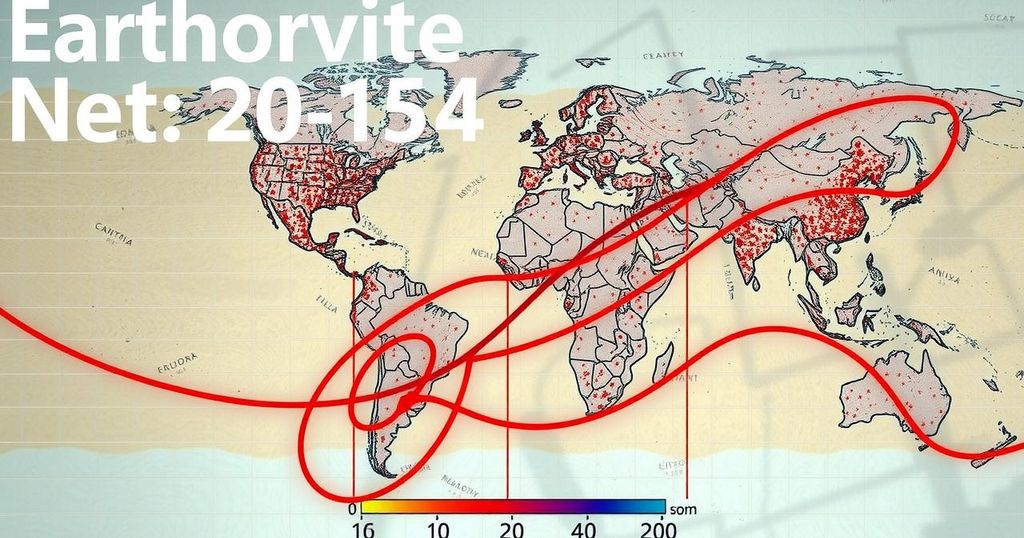A 6.1-magnitude earthquake struck Chile on January 2, following a series of notable seismic occurrences including a 4.7-magnitude event in California and a 3.3-magnitude quake in Alaska. This pattern of earthquakes reflects heightened geological activity in various regions, monitored by the United States Geological Survey (USGS).
On January 2, a significant earthquake registering 6.1 on the Richter scale occurred in Chile, with its epicenter located near Calama at a depth of 99 kilometers, as reported by the United States Geological Survey (USGS). At the time of reporting, 25 witnesses had come forth indicating they felt the tremor. This seismic event followed a 4.7-magnitude earthquake that struck California the previous day, its center positioned in Cobb at a shallow depth of 1.1 kilometers.
The seismic activity did not stop there, as days before the California quake, Alaska experienced a 3.3-magnitude earthquake centered in Nikolski, occurring at a depth of 39.5 kilometers. Shortly before that, a similar-magnitude earthquake also affected the Fort Bidwell area in California at a depth of 3.4 kilometers. This series continued back to December 27, where a more powerful 6.7-magnitude quake was registered near the Kuril Islands, marking notable geological activity in that region, with its depth noted at 162.6 kilometers.
Additional seismic disturbances included a 3.6-magnitude earthquake in McCarthy, Alaska, reported on December 26, as well as a preceding 3.0-magnitude quake in Clayton, California, on December 25. These occurrences culminated from the preceding 5.9-magnitude earthquake in Guisa, Cuba, on December 23. The repeated tremors across various locations illustrate the ongoing seismic activities affecting these regions, reflecting the dynamic nature of Earth’s geological processes.
Earthquakes are a common phenomenon, particularly in tectonically active areas such as Chile and California, both of which are situated along significant fault lines. The United States Geological Survey regularly monitors seismic activities and provides reports on earthquakes of varying magnitudes. Understanding the implications of these events is vital for disaster preparedness and public safety, especially in regions that face similar risks on a frequent basis.
In summary, the recent series of earthquakes across Chile, California, and Alaska highlights a notable period of seismic activity. With the 6.1-magnitude earthquake in Chile acting as a focal point, these geological events serve as a reminder of the Earth’s ever-changing dynamics. The ongoing monitoring by the USGS ensures that communities remain informed and prepared for potential future seismic events.
Original Source: www.klvi.com






